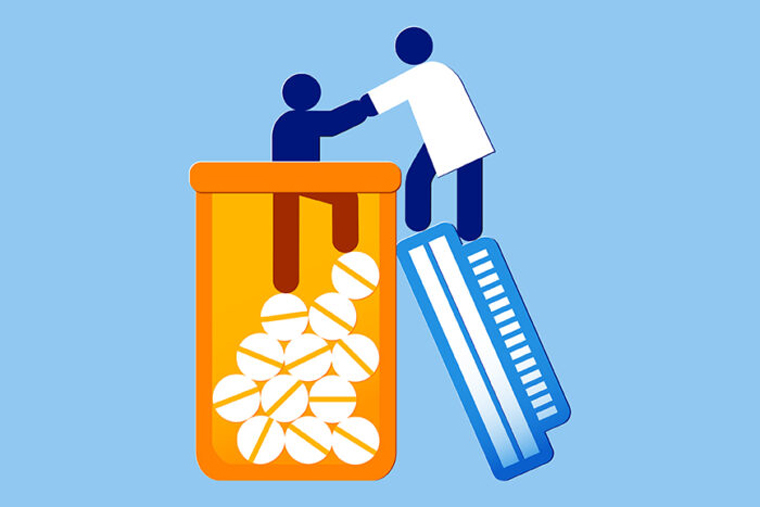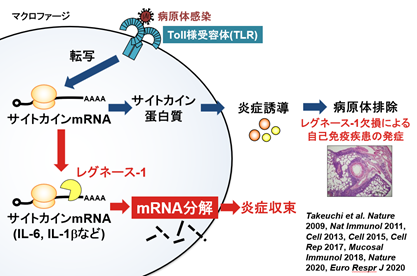対象者のうち、実績のある薬を投与されたのは半数以下、複数の薬物使用者が薬を投与される頻度はさらに低い Less than half of those eligible were given the proven medication; users of multiple substances received drug even less often
2022-05-10 ワシントン大学セントルイス
 Researchers at Washington University School of Medicine in St. Louis and Saint Louis University found that less than half of Americans who received treatment for opioid use disorder over a five-year period were offered a potentially lifesaving medication. The numbers were even lower for those with what’s known as polysubstance use disorder — when opioid users also misuse other substances. (Image: Getty Images)
Researchers at Washington University School of Medicine in St. Louis and Saint Louis University found that less than half of Americans who received treatment for opioid use disorder over a five-year period were offered a potentially lifesaving medication. The numbers were even lower for those with what’s known as polysubstance use disorder — when opioid users also misuse other substances. (Image: Getty Images)
・ワシントン大学セントルイス校とセントルイス大学の研究者が、5年間にオピオイド使用障害の治療を受けたアメリカ人の半数以下しか、救命につながる可能性のある薬を提供されていないことを明らかにしました。また、オピオイド使用者がアルコールや覚醒剤、ベンゾジアゼピン、コカインなど他の物質も誤用している場合、多物質使用障害として知られている場合、この薬による治療はさらにまれであることがわかりました。
・今回の発見は、オピオイド使用者を治療するための薬剤が一般的に十分に活用されていないという知見に基づくものです。
<関連情報>
- https://source.wustl.edu/2022/05/medication-that-lowers-risk-of-overdose-underused/
- https://jamanetwork.com/journals/jamanetworkopen/fullarticle/2792121
オピオイド使用障害および多剤併用におけるBuprenorphineとNaltrexoneの比較有効性 Comparative Effectiveness Associated With Buprenorphine and Naltrexone in Opioid Use Disorder and Cooccurring Polysubstance Use
Kevin Y. Xu; MPH1; Carrie M. Mintz, Ned Presnall, Laura J. Bierut, Richard A. Grucza
JAMA Network Open Published:May 10, 2022
DOI:10.1001/jamanetworkopen.2022.11363
Abstract
Importance Despite prevalent polysubstance use, treatment patterns and outcomes for individuals with opioid use disorder (OUD) and cooccurring substance use disorders (SUD) are understudied.
Objective To evaluate the distribution of buprenorphine and naltrexone initiation among individuals with OUD with vs without cooccurring SUD and to assess the comparative effectiveness associated with buprenorphine and naltrexone against drug-related poisonings.
Design, Setting, and Participants This observational comparative effectiveness study used insurance claims from 2011 to 2016 from the US IBM MarketScan databases to study initiation of medications for OUD (MOUD) among treatment-seeking individuals aged 12 to 64 years with a primary diagnosis of OUD. Cooccurring SUD was defined as SUD diagnosed concurrent with or in the 6 months prior to OUD treatment initiation. Treatment was codified as psychosocial treatment without MOUD or initiation or buprenorphine or naltrexone (including extended-release or oral). Methadone recipients were excluded from analysis. Data were analyzed from February 3, 2021, through February 26, 2022.
Exposures MOUD.
Main Outcomes and Measures Associations between cooccurring SUD diagnoses with treatment type were assessed with multivariable regression. The association of drug-related poisoning admissions with days covered with buprenorphine or naltrexone prescriptions vs days without prescriptions was assessed among MOUD initiators. Odds ratios from within-person fixed effects models were estimated as a function of MOUD and stratified by cooccurring SUDs.
Results Among 179 280 individuals with OUD (mean [SD] age, 33.2 [11.0] years; 90 196 [50.5%] men), 102 930 (57.4%) received psychosocial treatment without MOUD. Across 47 488 individuals with cooccurring SUDs, 33 449 (70.4%) did not receive MOUD, whereas across 131 792 individuals without cooccurring SUDs, 69 481 (52.7%) did not receive MOUD. Cooccurring SUD was associated with decreased odds of initiating buprenorphine (risk ratio [RR], 0.55 [95% CI, 0.54-0.56]) but increased odds of initiating naltrexone (extended release: RR, 1.12 [95% CI, 1.05-1.20]; oral: RR, 1.95 [95% CI, 1.86-2.03]). Among 12 485 individuals initiating MOUD who experienced at least 1 drug-related poisoning during insurance enrollment, buprenorphine treatment days were associated with decreased poisonings compared with days without MOUD for individuals with cooccurring SUD (odds ratio [OR], 0.56 [95% CI, 0.48-0.65]) and individuals without cooccurring SUD (OR, 0.57 [95% CI, 0.53-0.63]), with comparable associations observed for extended-release naltrexone. No protective association was observed for oral naltrexone.
Conclusions and Relevance These findings suggest that individuals with OUD and polysubstance use were less likely to initiate buprenorphine and naltrexone than individuals without polysubstance use. Among individuals initiating MOUD, polysubstance use was associated with decreased buprenorphine and increased naltrexone initiation, despite buprenorphine’s protective associations against drug-related poisoning.


